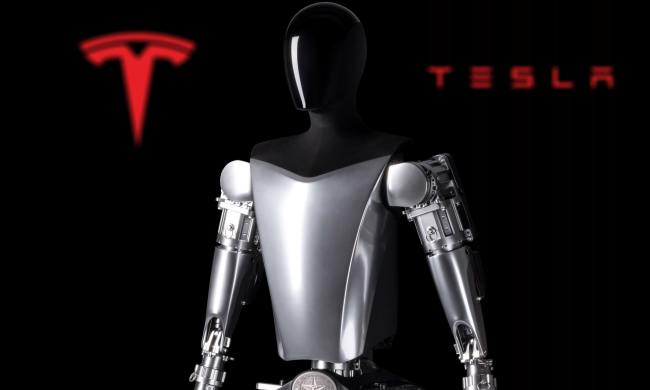It’s no secret that many of the world’s mega-corporations have a penchant for large, lavish, and downright legendary headquarters. Whether it’s enormous buildings, provocative architecture, or outrageous amenities, Fortune 500’s love to show the world how awesome they are through their buildings. To give you a sense of what we mean, we’ve rounded up some of the biggest, baddest, and most ridiculous corporate headquarters on the planet — and ranked them according by their completely subjective level of “coolness.” Enjoy!
- 10. Bank of China Tower Hong Kong – 1.4M square feet
- 9. Hearst Tower New York City – 861K square feet
- 8. Nike World Headquarters Beaverton, Oregon – 2.2M square feet
- 7. The Googleplex Santa Clara, California – 3.1M square feet
- 6. Amazon Biodomes Seattle – 40K plants
- 5. Lloyd’s inside out building London – 1.2M square feet
- 4. Facebook Menlo Park, California – 430K square feet
- 3. BMW HQ Munich – 3.7K square feet
- 2. Apple’s Space Ship (Apple Park) Cupertino, California – 2.8M square feet
- 1. Microsoft Redmond, Washington – 14.9M square feet
10. Bank of China Tower
Hong Kong – 1.4M square feet
Despite having a past filled with controversy and setbacks, the Bank of China Tower in Hong Kong, otherwise known as the BOCHK, is an impressive structure.
The building’s plot was originally occupied by the “Murray House,” until it was moved brick-by-brick to a new location. After that, the BOCHK suffered numerous construction setbacks, both structurally and politically, before and after it was finished.
The building’s sleek steel and glass exterior, when viewed from the right angle, has given the building the nickname “The Cleaver”. While not the most pretty nickname a building could have, it is frighteningly appropriate for a banking giant.
9. Hearst Tower
New York City – 861K square feet

Located in the middle of Manhattan, Hearst Tower is the headquarters of (you guessed it) Hearst Communications. It houses a multitude of publication and communication companies that collectively make up one of the world’s largest media conglomerates.
The Hearst tower, much like the BOCHK, is a shining beacon of glass and steel. With some striking design elements, the four corners of the sky-scraper feature concave diamond shapes, known as “bird mouths”.
These inset designs have caused the most controversy with the building, as cleaning all those windows became an obvious issue in 2013 when two window cleaners were trapped on the exterior of the tower, leading to a 3 year and 3 million dollar research of proper window cleaning procedure.
8. Nike World Headquarters
Beaverton, Oregon – 2.2M square feet

Plopped into the center of Beaverton, Oregon, the Nike world HQ doesn’t fail to live up to the company’s sporty image. The facilities house two soccer fields, an impressively large gym, a tennis court, a putting green, and a beautiful running court that makes it’s trail through some of the area’s native greenery.
The Beaverton facilities also house the “Nike Sport Research Lab”, or NSRL. The lab is joint owned by American Apparel and Nike, and is used for various sports equipment and apparel testing using motion capture rooms, environmental chambers, and a set of facilities known individually as “The Kitchen” and “The Oven”.
7. The Googleplex
Santa Clara, California – 3.1M square feet

In 2003 Google acquired the leasing rights to what would become known as the “Googleplex” — a sprawling campus in southern California filled with elaborate buildings, pathways, ponds, fountains, and parkways.
Since Google’s acquisition of the complex, they company has given the space a healthy dose of Google’s signature flair. The interior is adorned with shade lamps, huge rubber balls, and other interesting furniture, along with striking colors and murals that theme in tune with Google’s distinctive logo.
Besides enjoying such a lavish workplace, Google employees are also treated to a pretty sweet set of creature comforts and utilities. The facilities include multiple sand volleyball courts, eighteen cafeterias with diverse menus, two small swimming pools and free laundry, for when … you know, you just need to do your laundry at work.
6. Amazon Biodomes
Seattle – 40K plants
Alright, so this entry isn’t technically a full-fledged headquarters, but rather a single section of one. Amazon’s sprawling business campus in Seattle is making waves with it’s latest addition: Three steel and glass bio-domes — the tallest and most central of which stands over five stories tall.
Announced in early 2016, the domes are now well on their way to being completed, and are already filled with a wide variety of plants. The upkeep of all these trees and bushes is monitored by Amazon’s full time horticulturalist, Ron Gagliardo.
Sure to be a welcome sight and experience in Seattle’s dense urban center, Amazon’s bio-domes already provide a fantastic splash of the natural world in the northwest’s urban jungle.
5. Lloyd’s inside out building
London – 1.2M square feet
Central London is home to a particularly peculiar structure, often referred to as the “inside out” building. Designed by Richard Rogers and Co., the Lloyd building is the home of the insurance institution, Lloyd’s of London.
The building features an avant-garde style of construction known as Bowellism, wherein the building’s guts, such as ducting and lifts, are located on the exterior of the building in order to maximize space within the interior.
Twenty five years after its construction, the Lloyd Building received a Grade I listing, labeling it a “building of exceptional interest,” officially. Lauded by Historic England to be “Universally recognized as one of the key buildings of the modern epoch.”, it has certainly made an impact in London’s traditionally medieval architecture.
4. Facebook
Menlo Park, California – 430K square feet
Opened in March of 2015, Facebook’s campus in Menlo Park, California is an impressive site. The massive 430,000 square foot space houses over 2,800 employees, with the big man Zuckerberg himself positioned at a desk in the center.
With a design focused on creating a social environment, the structure boasts wide open rooms with glass walls. The Facebook HQ also makes thorough use of colorful lighting and paint schemes, all lending to the “fun, collaborative space” theme that FB’s “Chief People Officer” Lori Goler boasts of.
Arguably the most distinguishing feature of the building is the nine acre green space adorning its roof. With a half mile walking loop, 400 full-grown trees, and tools that make it easy for employees to work in the park, it provides a nice respite from the regular office environment.
3. BMW HQ
Munich – 3.7K square feet
Built between 1968 and 1972, the BMW HQ in Munich is definitely a building you won’t forget. With the main structure built to resemble the pistons of an engine, it is certainly on of the more unique offices one could ever hope to work in.
On top of that, the adjacent structure, the BMW museum, is designed to represent the head of a piston’s cylinder. Coupled with BMW’s iconic logo and striking colors, the entire complex is a site you will not soon forget.
The complex has even appeared on the silver screen a handful of times, including a cameo appearance in the 1975 film Rollerball, where BMW’s branding was replaced by large orange circles, meant to represent the fictional company featured in the movie.
2. Apple’s Space Ship (Apple Park)
Cupertino, California – 2.8M square feet
Apple has always focused on being new and different, and not just with its phones. Back in 2006 Steve Jobs himself announced plans for the “Apple Campus 2,” featuring an enormous ring shaped office building as its center piece.
Nicknamed the “Space Ship” due to its size and shape, the newly completed office building features enough accommodations for 12,000 staff members — and plenty of amenities for them to enjoy. With seven cafes, an auditorium known as the “Steve Jobs Theatre,” a 100,000 square foot wellness center, and more; Apple employees will have plenty to take their minds off the daily grind when break time hits.
Besides pristine construction and employee care, the Apple Park features just that: a lot of park. The interior circle of the office space is 25 acres and covered with fruit trees and other greenery. It even has a pond!
1. Microsoft
Redmond, Washington – 14.9M square feet

Microsoft has called Redmond, Washington home since February 1986, having moved into the grounds there barely weeks before the company went public in March of the same year. Since then Microsoft and it’s home in Redmond have continued to grow, working with the community around it to accommodate increased traffic, even helping to fund construction of an overpass.
In 2009, a shopping mall was completed on the campus, which added 1.4 million square feet of retail space, including restaurants, a pub, and even a soccer field. This would be the last major renovation until 2017, when plans were announced to demolish 12 buildings and replace then with 18 new ones.
With an approval for a max height extension from six floors to 10, and a design plan that is more akin to an urban neighborhood than a business campus, the whole site is expected to be quite a spectacle when its completed sometime in 2023.








